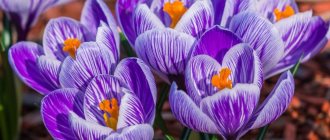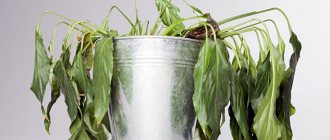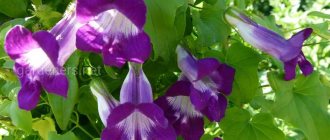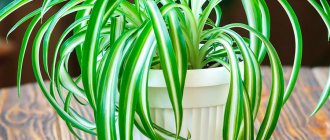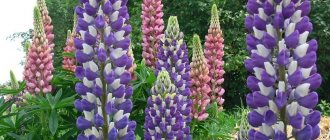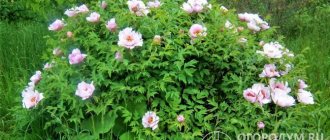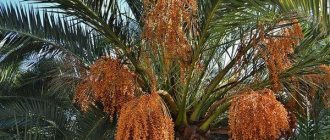Types and varieties of petunias
The most common type of flower is hybrid petunia, otherwise called garden petunia. Multi-flowered varieties of petunias, spread like a carpet on the ground, look impressive in large flower beds, borders and borders.
Their flowers are not large, up to 5 cm in diameter, but the plant blooms profusely and for a long time. Multi-flowered petunia is unpretentious to the soil, tolerates cold weather and rain, but prefers sun and warmth.
Known varieties of bush multi-flowered petunia:
- Fantasy - hybrids of various colors;
- Dream is a low-growing petunia with different types of flower colors;
- Ultra - early variety with compact flowering bushes;
- Storm is a hybrid variety that is resistant to temperature changes;
- The hit parade is petunia, characterized by a huge range of colors.
Large-flowered varieties of petunias are capricious and demanding of weather conditions. Luxurious flowers reach up to 12-16 cm in diameter. They are often used to decorate loggias, balconies, and patios. Terry and fringed varieties look especially impressive.
Grandiflora varieties with large gramophones are highly aesthetic. Known varieties:
- Frillitunia - bright colors, corrugated edges;
- Fimbriata - an unusual fringed edge;
- Superbissima - wavy edge, dark-colored inner surface of the gramophone.
In the photo, floribunda petunias look as impressive and attractive as they do in the garden. They are used to decorate large flower beds and flower arrays.
Floribunda varieties successfully combine the properties of large-flowered and multi-flowered plant species. The varieties are resistant to low temperatures and high humidity - and in rainy, cool summers, petunia will delight the eye with its multicolored variety.
Ampelous types of petunias are often used in landscape design. Long flexible vines from the base to the tip of the branch are strewn with flowers. They are unpretentious in care and are grown both in the garden and for decorating loggias and balconies.
In suburban areas, ampelous varieties of petunias are often used to decorate alpine hills, the banks of reservoirs, and create spectacular and bright flower beds. Among the popular hanging varieties:
- Waterfall;
- Lilac Surf;
- Wave of luck;
- Pearl surf.
Cascading petunias grow long shoots that hang down beautifully and grow in all directions, making the bushes look picturesque. They are ideal for decorating balconies, loggias, and gazebos. The most common varieties:
- Ramblin;
- Typhoon Cherry;
- Rose Wayne Velvet.
These are not all varieties of petunia - new ones are constantly being developed - with terry, velvet buds, and various colors.
general information
Petunia is a bushy ornamental flower with creeping or straight shoots. It has expressive oval leaves up to 12 cm in size and a deep dark shade. Most often, the plates are pubescent, and bright petals look especially elegant against their background.
Petunia bushes can grow up to 0.7 m, but there are very tiny varieties up to 15-20 cm. On short peduncles, funnel-shaped flowers with regular or double inflorescences open wide. When growing indoor varieties, keep in mind that petunia flowers can have a very strong smell.
Breeders and gardeners have been dealing with petunias since the eighteenth century. The now popular hybrids began to be bred about a hundred years ago to decorate the balconies of mansions. Then they migrated to flowerpots, and soon filled the gardens.
Photo: pixabay.com
Growing petunia from cuttings
Cuttings are taken from flowering plants in August-September, choosing shoots 6-8 cm long with 2-4 pairs of leaves. The lower cut is made oblique, and the upper cut is made straight, 1-1.5 cm above the nodal connection.
The cuttings are immediately planted in the ground; this must be done no later than 2 hours after cutting, otherwise the plant may not take root or will not bloom. You can take cuttings in water, then the shoot should be a little longer - up to 10-12 cm. The lower leaves of the cuttings are removed, and they themselves are placed in settled water at room temperature.
The container should be opaque, plastic or metal. After placing the cutting, it is covered with film and placed in partial shade. After the roots appear, they are transplanted into the ground.
Unpretentious
Small-flowered bush and ampelous petunias are considered the most unpretentious. They do not suffer from summer temperature changes, quickly restore the shape of their petals after rain and wind, and bloom profusely until late autumn.
Surfinia, which is classified as a petunia, is distinguished by its unpretentiousness and abundant flowering. It is planted in hanging pots and flowerpots, as it forms lush bushes with hanging shoots.
Storm is a group of varieties of large-flowered petunia, recently bred. The plants are distinguished by their bright, long-lasting flowering and resistance to adverse weather conditions.
Multi-flowered petunias are easy to maintain and withstand the vagaries of the Russian climate. Interesting varieties:
- Alderman (blue);
- Angelica (light yellow).
Storm Lavender
Alderman
Superbissima
This group continues the series of the most unusual petunias. Plants of this group are more for gourmets than for landscape gardening.
The flowers themselves are very large, with a dark marble coating in the wide throat and with strongly corrugated petals, the back side of which is darker than the outer side. Plants of this group spend a lot of effort on blooming such large flowers, therefore, they do not bloom profusely and need feeding.
- The bushes are erect.
- No more than 3 flowers bloom at the same time on one plant.
- After flowering, wilted flowers should be removed so as not to spoil the appearance.
- The resistance to precipitation of Superbissima petunia is average.
Petunia Superbissima is usually planted a couple of times, rather for interest.
Photo: petunias from the Superbissima group (photo from the Internet)
New, unusual varieties
More and more new varieties are appearing in the assortment of flowerbed and balcony varieties that deserve special attention. The main emphasis of breeders is on the uncharacteristic color of petunias.
Attention! Currently, new hybrids have received the greatest attention from flower growers, the distinctive feature of which is “black” flowers.
Taking into account the latest trends, the following varieties have gained wide popularity:
- "velvet";
- "cherry".
Velvet
Cherry
What is the reason for the large assortment?
By planting petunias on his plot, each gardener solves specific problems. Some varieties are suitable for growing outdoors.
A bed of tall petunias, especially a well-chosen two-color one, makes a great decoration.
Others like hanging flowerpots with hanging cascading flowers (read about what varieties of petunias can be grown in flowerpots here). Someone selects petunias of original, unusual colors. What types of petunias are there? Below are all the best species, their photos and names.
Surfinia
The petunia hybrid is distinguished by elongated, plastic and hanging shoots with powerful growth. They can grow up to 2 meters. The blooming petunia of this species is good - its gorgeous flowers are large, rich-looking, with a bright, rich color.
Surfinia petunias are ideal for garden decoration and yard design
Growing petunias (step-by-step photos)
Lady Latina Perfection
She burst into the world of decorative floriculture not so long ago, some 200 years ago. That's exactly what burst in. The petunia flower looks like a sultry beauty with an admixture of common blood, eclipsing the flower aristocracy. A strong, hardy, unpretentious plant, thanks to the tireless care of breeders, acquired an aristocratic gloss, and from a naive village simpleton turned into Lady of perfection.
The homeland of the popular annual Solanaceae family is South America, from where it has spread throughout the planet, right up to the Arctic Circle. Our heroine’s wild ancestors were not particularly beautiful, at least that’s what they thought until the first hybrid plant bloomed. In 1834, the magical transformation of the humble summer plant began, the hybridization of which began with eminent breeding companies in the USA, Great Britain, and Japan.
Today it is the best-selling flower, the seeds of which make up a third of the world's assortment.
Bush
Pirouette
Hula Hup
The bush variety is the most popular flower group with erect stems. The smallest representative reaches a height of 30 cm. And tall, spreading representatives of the group can produce shoots up to 75 cm. The diameter of a blossoming bud ranges from 3 to 15 cm, its edges are characterized by different shapes. One bush may have several different shades of buds.
Important! Bush petunias can be cultivated both in open ground and in hanging containers.
Flower growers are most willing to grow:
- "pirouette";
- "Hula Hup".
Vegetative
Most of the hybrids of this plant are qualitatively propagated by seeds. But there are also varieties for which the cutting method is acceptable for procreation. In the classification, such varieties are called vegetative.
The main characteristics of these petunias include:
- small size;
- hanging or erect stems;
- double or simple flowers;
- various colors.
Vegetative petunia is represented by the following varieties.
"Plus papaya"
A small bush with an impressive number of bright orange flowers. Calmly tolerates temperature changes. Designed for cultivation in pots.
"The Cardinal's Surprise"
Low, densely branched plants with abundant flowering. The buds are burgundy-purple. Grows on lawns and in pots.
"Tumbelina Maria"
An ampelous garden group of petunias, intended for cultivation in hanging structures. A small cup of bluish-lilac color with a terry structure.
Fine mesh
Petunia Daddy Blue F1
The mesh pattern gives the flowers extraordinary sophistication; for example, the variety from the Daddy Blue F1 series has dark blue, contrasting veins visible on a lilac-blue background. This American series of hybrid petunia also has other delicate colors - Pink, Red, Sugar, Orchid, Peppermint, which combine harmoniously when planted together. The plants are distinguished by very large flowers with a diameter of 8-10 cm, they branch well; to obtain a lush bush, the shoots should be pinched. Recommended for planting in balcony boxes.
Decorating a summer cottage or house yard using petunia, photo
The wealth of colors and varieties allows you to create incredible combinations of shades and different designs. Multi-colored flower beds, flower cascades, fragments of trees equipped for flower beds, even car tires are a field of activity and a source of inspiration for the summer resident.
Petunia goes well with flowers that complement each other in flowerbed arrangements (see first photo). For these purposes, you need to choose the same non-capricious, sun-loving plants (for example, snapdragons, salvia, calendula, gillyflowers). When decorating a summer cottage with petunias, you should not forget about sunny places, since in shady areas it simply will not be able to gain strength and bloom fully. Well-lit, slightly shaded areas are ideal for this plant.
Some design options:
- Vertical flower beds are an amazing sight that is very easy to create in your dacha. To do this, a frame is made of rolled up metal mesh, which is covered from the inside with agro-film. It turns out to be a kind of pillar that is filled with soil. Holes are made in the mesh holes where the petunia seedlings are placed. This is followed by appropriate flower care.
- Petunia trees look impressive. In order to make such a “tree”, you will need a welding machine and metal pipes of different diameters. First of all, a pipe is installed on the ground. Then, from thinner pipes, “branches”-stops are welded to it, which will hold flower pots. Thick wire is used to bend pre-prepared pots (to obtain a shape). Then the ends of the wire are also welded, forming a stand for the pot. The trunk and branches of such a tree are painted with green paint.
- Flower beds made from boxes look very beautiful under the windows of a country house or even on a fence, placed in a checkerboard pattern or the way you like. There are no difficulties at all, you just need to get some boxes. The boxes can be wooden, clay, with forged edging - it all depends on your imagination.
The main decoration of the site - Flowerbeds are the widest field of action for a creative summer resident. They can be multi-tiered, round, square, in the form of a flower stream, even repeating any designs. It doesn’t matter how big the dacha plot is, there is always room for a petunia flower bed or a small flower rug.
How to plant petunia beautifully - Flower cascades are created from petunias of ampelous varieties (hanging, with long stems). To get an excellent result, just place such a flower in a pot and hang it. Such compositions from hanging pots are one of the most popular techniques for floral decoration of summer cottages.
Ampelous petunia itself is a decoration; how many pieces to plant in a pot determines the size of the container, for example, 4-5 bushes with a diameter of 20-30 cm. With the onset of spring, shopping centers begin to sell pots 22 cm in diameter, in which 3 bushes are comfortably located .
Flowerbed
Despite all the subtleties and nuances, growing and planting petunia is not difficult - any novice gardener can do it. Attention to seedlings and proper care will bear fruit. If you at least once grow a lush, fragrant beauty from a small seed, you will never refuse its presence at your dacha.
Where to plant petunia in the garden, photo
Don’t forget to fertilize and water this amazing flower on time - it will delight you with its flowering until the cold weather.
